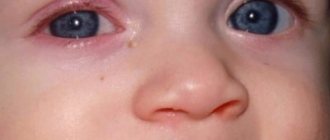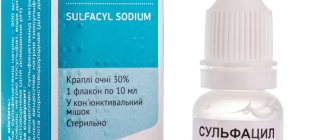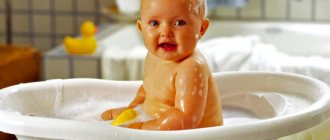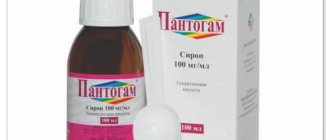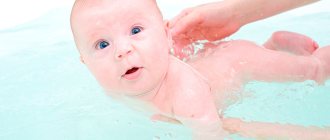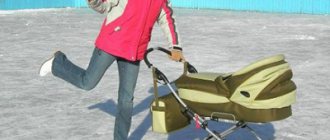Description
Albucid eye drops are prescribed by ophthalmologists for various infectious eye diseases. Medicine is prescribed for inflammation of the organs of smell and hearing. The drug is used to prevent and cure a number of diseases. The indications are:
- conjunctivitis;
- prolonged rhinitis;
- eye stye;
- blepharitis;
- keratitis;
- otitis;
- with adenoids;
- other eye infections.
But the use of Albucid for a runny nose in children is possible after consultation with your doctor. The drug is not characterized by a vasoconstrictor effect. There is no dependence on it. Fights microbes, eliminates the acute inflammatory process. Characterized by a drying effect. The amount of mucus discharge from the nose decreases.
What kind of runny nose does the remedy help cure?
This lightweight antimicrobial solution is an excellent alternative to heavy antibiotics.
Being a local antiseptic, it is not effective for rhinitis of viral etiology (in the first two to three days from the onset of ARVI) and allergic rhinitis. Albucid nasal drops for children are indicated for use:
- in cases of prolonged bacterial infections in the sinuses, accompanied by the release of viscous yellow-green mucus, sometimes with a putrid odor;
- with complex therapy of adenoiditis;
- for the treatment of injuries to the nasal mucosa;
- as a means of improving the patency of the nasal passages in newborns.
How to use?
Before you start using this medicine, be sure to check the packaging for safety. It is important to look at the production date of the medicine. If the composition needs to be heated before use, this is done using a steam bath. Before performing the procedure, wash your hands with soap and dry with a towel. Before Albucid is instilled into the baby's nose, rinsing is required. A year old child’s rinsing is done using a saline solution. To prepare you need:
- take a clean glass container;
- liter of boiled water;
- a teaspoon of salt;
- pipette.
Mix the ingredients in a container and instill them as follows:
- The child must be in an upright position.
- Tilt your head back.
- Place 1-2 drops into each nasal passage.
- After the procedure, blow your nose.
Next, you can begin the procedure of instilling the medication itself. Tilt the baby's head back and use a pipette to inject the medicine into both nasal passages. The interval between instillations is a couple of minutes. The concentration of the drug for children is prescribed 20%. Otherwise, there will be irritation of the nasal mucosa. A doctor should prescribe Albucid nasally to children. The severity of the disease, the age of the baby, and individual characteristics are taken into account. Afterwards the required dosage is determined.
Usually 1-2 drops are prescribed in each nasal passage 4 times a day. Duration of therapy is 5-6 days. It is recommended to dilute the drug with boiled water in a 1:1 ratio before instillation. Undiluted product causes discomfort. Before instilling Albucid for a runny nose, clean the baby’s nasal passages using cotton swabs. They must be soaked in saline solution. Ready-made ones such as AquaMaris or saline solution are used. The drug does not penetrate deeply into the mucous membrane. If the medication is dripped correctly, it has only a local effect and does not end up in the digestive system. This is very important when taking antibiotics in infants.
Albucid for children
The product can be used from the first days of a child’s life, up to 3 drops, no more than 6 times a day. Instillation is carried out under the lower eyelid, on the recommendation of a doctor, who will have complete information on the specific pathology. In addition to eye diseases, the drug can be used for long-term runny nose caused by a bacterial infection (this is exactly the case that pediatrician Komarovsky spoke about).
Among the symptoms of such a runny nose are the presence of nasal discharge of a greenish or yellowish tint, and a prolonged course of rhinitis. To increase the effectiveness of the drug, you can clean the nasal cavity with saline solution.
You need to be extremely careful during this procedure.
It is important to understand that this is an antibacterial medicine that will not be effective for viral diseases. If a specialist has diagnosed allergic or viral conjunctivitis, you should choose a different drug. Some bacterial ear infections (especially in children under 1 year of age) can also be cured by instilling this remedy.
How to use Albucid?
Before starting to use the drug, it is necessary to inspect the packaging for its integrity. Be sure to pay attention to the date of manufacture. If the drug needs to be heated before use, this is done using a steam or water bath. Before instillation, you need to wash your hands with soap, wipe dry with a towel and perform an external toilet in the area where the instillation procedure is being carried out.
Before introducing Albucid into the baby’s nose, rinse is carried out, then the child’s head is tilted back a little and the drug is delivered into both nostrils using a pipette at intervals of a couple of minutes. For children, it is recommended to use a concentration of no higher than 20%, otherwise a chemical burn to the nasal mucosa is possible.
To instill ears, prepare a solution of the drug and water in a ratio of 1 to 2. Apply a 5-10% solution, warm up to 40 degrees, after which 1-3 drops are instilled into the ear. Only the affected ear is instilled.
For the treatment of inflammatory processes and diseases associated with the organs of vision in children, a 20% solution is used. The instructions say to instill 2-3 drops 3 times a day. Drops are given in doses without touching the mucous membrane.
The drug must be used strictly as prescribed by a doctor. Self-medication is unacceptable.
Possible contraindications
Albucid and its analogues may cause some undesirable effects if you have an allergic reaction to one of the components. The drug is allowed for use during pregnancy. Side effects are extremely rare and may include:
- increased lacrimation;
- redness of the mucous membrane;
- burning;
- itching;
- swelling.
If the slightest side effects or discomfort occur, you must immediately stop further use of the drug. Dosages of the drug in 20-30% concentration cannot be used with drugs containing silver salts and local anesthetics.
Possible contraindications
The medication and its analogues are prohibited from being used in case of individual intolerance to a component in the composition. The product can be used during breastfeeding and pregnancy. Side effects are extremely rare:
- the appearance of swelling;
- feeling of burning and itching;
- redness of the mucous membrane.
If such reactions occur, it is better to discontinue use of the drug.
There are precautions that should be taken into account. The product should not be used by a child if the inflammatory process is only at the initial stage. The use of the medication is not advisable until rhinitis becomes bactericidal in nature. There is no need to experiment and self-medicate. Otherwise, you can aggravate the situation and harm your child. The baby may have an allergic reaction to the drug. Therefore, use strictly after consultation. The price of the product is not high at all, but the effect is good.
Side effects
Albucid eye drops are an antibacterial agent that is applied topically to the affected area. The drug is used in ophthalmology. Albucid has established itself as a drug that is active against a large number of microorganisms. The spectrum of action of Albucin is quite wide. The main pathological organisms to which it is active include:
- streptococci (GBS, Streptococcus agalactiae and Streptococcus pneumoniae) – gram-positive bacterium (coccus);
- Staphylococcaceae;
- Neisseria gonorrhoeae;
- Shigella;
- E. coli;
- Vibrio cholerae;
- anthrax pathogen;
- causative agent of diphtheria;
- chlamydia and more.
A unique substance in the composition of the drug has a destructive effect on increasing the number of units, delaying the proliferation of pathogenic microbes. The active component of Albucid inhibits the production of necessary enzymes that are involved in the synthesis of purine and pyrimidine nucleotides for the DNA of pathogenic microorganisms. When sulfonamide is instilled into the eyes, their concentration is achieved half an hour after instillation.
After the drug reaches the thin transparent film of the eye - the conjunctiva, a change occurs in the formation of amino acids in the bacterial cell, as a result the microorganism becomes blocked, it is no longer able to reproduce and eventually dies.
For adults, it is prescribed for the treatment of damage to the anterior part of the eye by infections that are sensitive to Albucid, as well as gonorrheal and chlamydial diseases. In pediatrics, for newborns and older children, this drug is used to treat blenorrhea and is also used for its prevention.
Albucid exerts its effect on the affected area exclusively locally; the chemical penetrates only into the eye tissue, without entering the general bloodstream. The maximum concentration of albucid in the anterior, most convex and transparent part of the eyeball is up to 3 mg/ml, in the intraocular media 0.5 mg/ml and on the iris of the eye no more than 0.1 mg/ml in the first 30 minutes after administration.
Let's look at the side effects that sodium sulfacyl (Albucid) can cause. Instructions for use indicate the following local reactions:
- itching;
- burning;
- sneezing;
- tingling;
- redness;
- swelling;
- temporary visual impairment;
- allergic manifestations on the skin and itching in the nose.
Recommendations of Dr. Komarovsky
Dr. Komarovsky is of the opinion that these drops dissolve well in water, so they are more effective against bacteria in the moist environment of the eyeball. When this medication gets into the nose, it simply does not have time to dissolve and begin its effect. Therefore, it very quickly enters the pharynx, and then into the esophagus. This happens if a child swallows them. The doctor believes that this is only an imitation of rhinitis treatment. There is no need to prescribe this drug to treat a runny nose. Each medication has its own purpose, which must be followed. Rhinitis requires proper treatment. It is important to create good conditions for the baby’s recovery. Every parent should:
- constantly do wet cleaning of the room;
- provide fresh air.
In extreme cases, drops such as Nazol or Nazivin . Sometimes, instead of Albucid, children are prescribed Tobrex , but these are also exclusively eye drops.
Composition and release form of the drug Albucid
The main active ingredient is sulfacetamide, which interrupts the bacterial growth cycle. This component creates an imbalance in the process of amino acid synthesis. It is active against most types of cocci, actinomycetes, E. coli, toxoplasma and other pathogens. A twenty percent aqueous solution contains 20 mg of sulfacetamide in each milliliter of the drug.
The drops also have a detoxifying and antihistamine effect due to the presence of sodium thiosulfate salt in their composition. Hydrochloric acids normalize the acid-base environment of the eyes and nose. The drug goes on sale in 10 ml plastic bottles equipped with a convenient dropper.
Reviews about the application
Not every parent uses these drops when treating a runny nose.
But patient reviews only speak about the successful recovery of children. But the drug found not only its supporters, but also its opponents. This is due to the fact that with prolonged use it has a vasoconstrictor effect. But experts in their field refute this fact, since it has been proven that the medicine has absolutely no effect on blood vessels. Some people say in reviews that when the drug is instilled into the nose, it is powerless and ineffective. The effectiveness of the remedy depends on the nature of the runny nose. Allergic rhinitis can only be eliminated with antihistamines. The albucin composition can improve the patient's condition only if the snot is caused by bacteria. There is also the possibility of use during pregnancy. The drug is effective for a runny nose, but it is important not to self-medicate. Instillation of Albucid drops into the nose should be under the supervision of a doctor. The product is available without a prescription and can cause harm if used incorrectly. Use the composition according to the instructions, especially when treating children. If there is no result within a week and no improvement is observed, then replace the medication.
Overdose
The method of using Albucid for common eye diseases in adults is presented in the table below.
| Indications | Mode of application |
| For barley, conjunctivitis, blepharitis and other eye infections | 30% solution:
|
| For the prevention of infectious processes after surgery in the organ of vision | Albucid 20% (less often 30%): 2 drops in both eyes × 3-4 times a day. |
The sooner you start dripping the medicine, the more effective the treatment will be.
When using Albucid eye drops, follow a simple algorithm:
- Tilt your head back slightly and, with clean hands, pull down the lower eyelid until a depression forms between it and the eyeball.
- Look up and bring the tip of the bottle to the previously formed space (avoid contact with the eyeball!).
- Gently place 1-3 drops under the lower eyelid.
- Close your eyes and press your index finger on the inner corner of your eye for a few seconds: this will prevent the medicine from entering the nasal cavity through the tear duct.
- Repeat the same with the other eye.
DETAILS: Products that cleanse blood vessels from cholesterol: vegetables, fruits
If you wear soft contact lenses, be sure to remove them before instilling the medicine, as they may lose their transparency. Ophthalmologists recommend replacing lenses with glasses for the entire treatment period.
The course of drug therapy is determined by the doctor individually. On average it is 5-7 days.
Indications
The official instructions for Albucid say that the drug is indicated for use in the following cases:
- purulent corneal ulcers;
- conjunctivitis;
- blepharitis;
- gonorrheal eye diseases in children and adults;
- prevention of blenorrhea in newborns.
In an unofficial format, these eye drops are also recommended for runny noses of a bacterial nature, when the child’s age does not allow the use of specialized medications, or other medications are ineffective in a particular case of bacterial rhinitis.
Albucid is an eye remedy recommended from the first hours of a baby’s life. It may well be included in the list of necessities for the delivery room. As soon as the baby opens his eyes, doctors in any case wash them with an antibacterial liquid, including Albucid, thus preventing eye disease in the first days of the baby’s life.
They can also be used as nasal drops from the first days of the baby’s life. The acid-base balance is optimal for both the eyes and the nasal mucosa. Therefore, they will not harm even a one-day-old baby.
The main contraindication to the prescription and use of Albucid is the child’s high sensitivity to any sulfonamide drugs. The remaining components of the product are neutral and harmless. Therefore, you can only be afraid of a reaction in the context of the active substance of the medicine.
If Albucid is not suitable for the baby, either as eye drops or nasal drops, the following adverse reactions will manifest themselves:
- drying of the mucous membranes on which the drug has come into contact;
- local itching;
- redness of the mucous membrane;
- swelling of the mucous membranes on which the medicine has come into contact.
There is no data on an overdose of the drug. The product has a local effect, its excess comes out naturally - either with tears or snot.
However, if you use Albucid as a nasal medicine for too long, you can harm the child’s own normal microflora of the nasal cavity. Therefore, be sure to check with your doctor about the duration of the course of treatment.
DETAILS: Interpretation of biochemical blood test indicators in children
In the context of prevention for newborns, two drops of Albucid are dripped into each eye immediately after the baby is born. The manipulation is repeated after 2 hours.
In case of treatment of eye diseases, use 2-3 drops of Albucid in each eye. They are dripped into the lower conjunctival sac 5-6 times a day until complete recovery.
The use of this medicine as a nasal medicine is justified in cases of runny nose, in which the following is observed:
- protracted course;
- thick discharge from the nose of a yellowish-green or greenish hue;
- unpleasant odor from the nasal cavity;
- low or zero effectiveness of specialized drugs.
Doctors unofficially recommend putting 1-2 drops of the product into each nasal passage at least twice a day. You should first clear your nose of snot. Ideally, you should also rinse it with a special saline solution.
In this case, the medicinal liquid will fall directly on the mucous membrane, and its effect will be many times more effective.
You should not expect instant results; noticeable changes in the condition of your baby’s nose should take 2-3 days. However, if you have been dripping the drug for a week and there are no visible changes, it is important to consult a doctor as soon as possible. He will find out what's wrong and perhaps prescribe you more professional and specialized treatment.
The main active ingredient of Albucid, when applied topically, either as an ophthalmic or nasal medicine, is categorically incompatible with preparations made on the basis of silver salts.
Otherwise, incompatibility reactions occur, which are manifested by the appearance and intensification of possible adverse reactions inherent in both drugs.
In addition to the original drug, there are analogs and alternatives that are equally used as eye drops and are often used in pediatrics as a cure for bacterial rhinitis. We provide an approximate list of such funds:
- Viziomitin;
- Makulin;
- Makulin Plus;
- Gentadex;
- Oftan Pilocarpine;
- Catalin;
- Tobrex;
- Sulfacyl Sodium.
These are eye drops that are sometimes used as nasal drops. However, it is worth considering that this is not a professional use, and consult a doctor first.
- Ekaterina, 26 years old. I know Albucid like eye drops; we included it in the list of things to take to the maternity hospital. But I would never have thought that it could be used as a remedy for a runny nose. We were about two years old, we had already seen all the doctors, dripped a bunch of things, and to no avail, greenish snot was flowing, and that was all, no fever, but still unpleasant. Our old pediatrician advised me to try putting these drops in my nose. Well, I was skeptical, but who knows? And you know, it helped. Somewhere on the fourth day, the snot became transparent, and then completely disappeared. So I highly recommend it, although not a traditional use, but very effective.
- Alesya, 22 years old. The child had snot, we were 8 months old. Age immediately cut off most of the really good drops. We tried Bebinos for newborns, the baby breathed through his nose at night and slept more or less normally, but nothing more, the flow of snot did not stop. Then my aunt advised me to put Albucid children's eye drops, but not in my eyes, but in my nose. Nothing to do, I tried. And after about five days the snot disappeared completely. So I highly recommend it!
- Maria, 25 years old. Only in our country can medicines be used for other purposes. Albucid - eye drops. But our pediatrician actively advises dripping them into the nose for a runny nose of bacterial origin. Honestly, I started it. There is, to put it mildly, no effect; Aquamaris is even more useless for newborns. As an eye remedy - yes, excellent, we dropped it a couple of times when the eye was cold. But for the nose they mean nothing at all.
- Olga, 23 years old. When we were collecting a first aid kit for a newborn, the doctor told us to definitely buy Albucid. Like, it’s good for the eyes, but maybe it’ll be useful for the nose too. We tried nasal drips a couple of times, the effect was approximately zero. Maybe it helps someone, but definitely not my girl. They have never been useful as an eye medicine, so for now I regard it as a waste of money.
- Rimma, 27 years old. For our eldest daughter, we have one proven remedy for a runny nose - Rinofluimucil for children. Helps always and without fail. But it took a long time to select the youngest one; we have regular problems with rhinitis, starting from six months. My surprise knew no bounds when the doctor advised me to put Albucid eye drops directly into my nose. I decided to try it. This had no effect on the duration of the runny nose, I’ll say right away. But transparent snot looks somehow not as scary as yellow-green ones. So, in any case, there is an effect, and it is noticeable already on the third day of use. And at night the nose does not dry out, in the morning there are no crusts in the passages. Of course, this is probably all purely individual, but for my child this method turned out to be quite effective.
DETAILS: Colorless stool in adults and children, causes, diagnosis and treatment methods
Albucid - eye drops for the little ones. They are used to prevent various bacterial diseases of the mucous membrane of the eyes.
Due to the sulfonamide derivative included in the drug, the liquid has a local antibacterial effect.
If a mother still wants to start dripping albucid into her child’s nose, she should consider the following tips:
- Instillation should be carried out after cleaning the nose so that the drug comes into contact with the mucous membrane and not with mucus. To do this, you need to blow your nose, rinse it with saline solution, or clean it with an aspirator.
- The product is instilled three times a day for a course of no more than 5-6 days.
- For babies under one year of age, the medicine should be diluted 1 to 1 with warm boiled water and 1-2 drops of the diluted medicine should be instilled into each nostril.
The opinion of official medicine
Official medicine does not agree with Komarovsky’s methods of treating rhinitis. Most doctors rely on the fact that not a single medical reference book or textbook contains any reference to the use of this drug as a remedy for the common cold. Therefore, the doctor has no right to prescribe a remedy whose effect has not been confirmed anywhere .
Even if rhinitis is caused by bacteria, they gradually get used to this medicine, and its subsequent use against other diseases (for example, eye treatment) will not have any effect.
Another important point is to obtain an analysis of the child’s nasal discharge. The doctor must make sure that the infection is truly bacterial. Bacteriological research is carried out over 4 days. During this time, the runny nose may already go away.
The baby’s parents should talk to the doctor, find out the cause of the disease and decide who to trust: official medicine or Dr. Komarovsky. After all, every parent takes responsibility for the health of their child.
Albucid is characterized by a local antibacterial effect. The medication is often prescribed for various eye diseases and rhinitis. The question of whether Albucid should be instilled into a baby’s nose and what the effect of the medicine is is extremely relevant.
